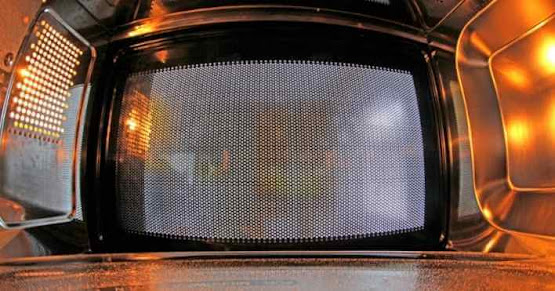Posts
Is it bad if the microwave doesn't spin? Find out!
- Get link
- X
- Other Apps

If you have bought a new microwave, noticed that it didn't spin. Possibly at first, you thought this was really weird because microwaves are supposed to rotate food so that it cooks evenly. But the real truth is that not all microwaves do this! It's possible for some microwaves to just simply heat up food without spinning them at all. So is it bad if my microwave doesn't spin? Well the answer to this is not at all. The cooking time may be slightly longer but the food will cook in a way that is just as effective. For one thing, microwaves are designed to heat up food quickly so they can get their job done fast and efficiently without any hassle for you. They don't have to rotate them because the waves of energy from inside bounce off the metal walls and make their way around to cook food all over. So because of this, microwaves can get hot spots inside that will burn your food if it is left in there too long which you don't want! So overall, not spinning or rotati...
Is an air fryer supposed to make noise? The Real Truth!
- Get link
- X
- Other Apps

If you are wondering if an air fryer is supposed to make noise, here is what to expect. Though a little on the noisy side, it can be tolerable when you consider how much better and tastier your food will be. Air fryers work by circulating superheated air at high speeds. The heated air touches the food and gets rid of moisture on the outside without drying it out. The hot air also curls around every nook and cranny of whatever you are cooking so that nothing is left untouched by its power. At the same time, because the air is superheated, it rushes inside and out at a fairly high rate. This means that there is a need to be efficient about its use. You need to watch how much you are using so that you don't overheat and damage your food. This is why air fryers tend to make some noise. You know it works when you hear it and you know how well it works when you take a bite of food which turns out crispy on the outside and moist on the inside. What can go wrong in an air fryer? The...
Toaster oven VS Microwave: Which one is better?
- Get link
- X
- Other Apps
A microwave and toaster oven both cook food in different ways. A microwave cooks the food by using radiation and a toaster oven uses warm air. The main advantage of a toaster oven is that it can cook more than just one thing at a time, whereas microwaves are usually limited in that sense. The most important trade off is the type of energy they use or emit: microwaves produce EM waves, whereas toaster ovens produce infrared radiation and heat waves, which are not as harmful as EM waves. If you want your food cooked quickly without risking parasites or cancer, go for the simple toaster oven! It's not an exaggeration when people say it's one of the best inventions ever made. It truly is. Plus, you can make really delicious treats that are very nutritious AND low calorie. Is a microwave actually as good as you think it is? A microwave may seem to be the "easiest" way to cook food. It has many conveniences (e.g., you can cook anything in it), so people often forget its sho...
Can You Microwave Tune Fish Meat
- Get link
- X
- Other Apps
Can you microwave a can of tuna? This is a question that's often asked. If you're looking for the answer, then this blog post has it! We'll discuss can you microwave tuna and more in depth later on. For now, we will talk about can you microwave a can of tuna. The short answer to the question "can I microwaves cans of tuna" is yes. How to microwave a tuna meat- The best way to can you microwave a can of tuna is to take the can out and follow these steps. - Remove the lid from the can, then remove any chunks in it by hand or with a fork. This will allow for even cooking time throughout the center can of your dish. - Make sure that all bits are removed before microwaving so that there's no chance they'll get burned as some points might have different cook times than others. If not, cut up anything left on top until each chunk becomes uniform in size and shape. - Place aluminum foil over both ends of the can (like an envelope) to shield those parts from bur...